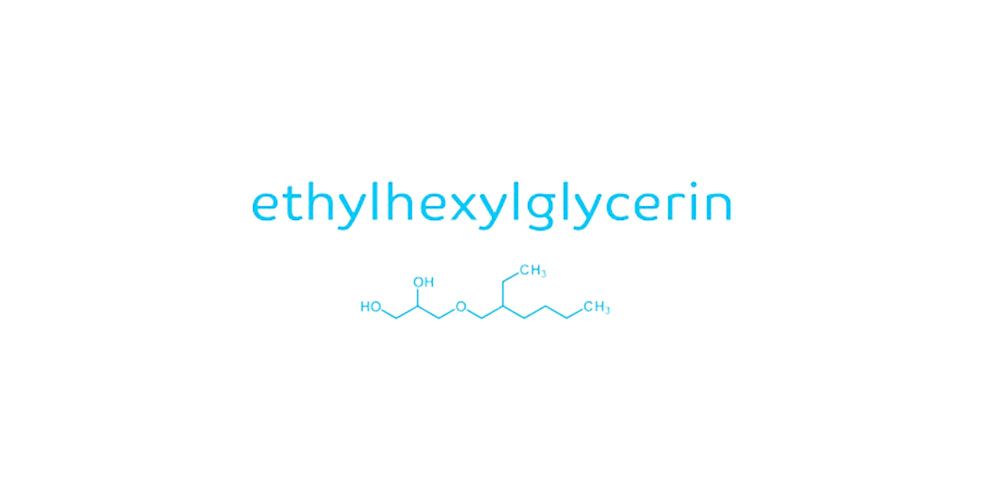We do shipping of our products WORLDWIDE.
ALL OUR PRODUCTS ARE PACKED BY VISUALLY HANDICAPPED
100% NATURAL PLANT SCENT ESSENTIAL OILS

Ethylhexylglycerin is a natural preservative derived from glycerin that also functions as a surfactant, a deodorizing agent, and a skin-conditioning agent in cosmetics and personal care products.
Ethylhexylglycerin is a relatively new chemical on the market. Many companies use it as an alternative to parabens and claim that it’s from natural sources.
Yes, it may have started out as a vegetable oil, but it’s gone through several chemical processes to become what it is. This isn’t the worst ingredient in the world, but it’s also not truly natural, and safety data are highly lacking for this ingredient. There are only four studies or reviews published in the National Library of Medicine.
Ethylhexylglycerin, or octoxyglycerin, is an alkyl glyceryl ether. This means that the Ethylhexyl group is bound to glycerin at one end by an ether linkage. It is derived from vegetable glycerin. Ethylhexylglycerin was first introduced to the cosmetic market in 1992 as a skincare additive and deodorant active called Sensiva SC50.
Ethylhexylglycerin may be used in bath products, body and hand products, cleansing products, deodorants, eye makeup, foundations, hair care products, and suntan products.
Ethylhexylglycerin functions as a preservative, a preservative enhancer, a surfactant, a deodorizer, and a skin-conditioning agent.
As a preservative, ethylhexylglycerin works by reducing interfacial tension on the cellular walls of microorganisms, promoting rapid destruction. This ingredient is often used as an alternative to parabens.
Additionally, ethylhexylglycerin may enhance the function of other preservatives in a formulation, such as phenoxyethanol, methylisothiazolinone, or methylparaben.
Without a preservative like ethylhexylglycerin, the natural compounds, essential oils, and ingredients in your beauty products would spoil more quickly.
Ethylhexylglycerin also functions as a surfactant. Surfactant is the short term for the surface-active agents. Surfactants are compounds that lower the surface tension between two substances, such as two liquids or a liquid and a solid.
In skincare products, surfactants work to degrease and emulsify oils and fats and suspend soil, allowing them to be washed away. This is possible because while one end of the surfactant molecule is attracted to water, the other end is attracted to oil.
Thus, surfactants attract the oil, dirt, and other impurities that have accumulated on your skin during the day and wash them away. Due to these properties, ethylhexylglycerin can be found in many different cleansers and body washes.
Ethylhexylglycerin has an HLB value of 7.5. HLB (Hydrophile-Lipophile Balance) is an empirical expression for the relationship of the hydrophilic (“water-loving”) and hydrophobic (“water-hating”) groups of a surfactant. An HLB of less than 10 means that the substance is soluble in oil.
Ethylhexylglycerin is used in many deodorant products due to its deodorizing properties. It reliably inhibits the growth and multiplication of odor-causing bacteria, while at the same time not affecting the beneficial skin flora.
The skin-conditioning effects of ethylhexylglycerin are due to the glycerol component. Glycerol is a natural alcohol and humectant that’s been used in skincare products for centuries, says Dr. Wendy Bollinger Bollag, cell physiologist.
In research published in The Journal of Investigative Dermatology, she and co-author Dr. Xiangjian Zheng, demonstrate that glycerin helps skin to look and function better by helping skin cells mature properly.
In fact, glycerin is not just a humectant but also an occlusive moisturizer as well. This means that while it softens skin, it also pulls water from the environment and helps prevent transepidermal water loss (TEWL).
Ethylhexylglycerin has also been found to improve the feel of cosmetic formulations. Tests have shown that ethylhexylglycerin can reduce tackiness and greasiness of a formulation, as well as increase speed of penetration.
According to EWG, ethylhexylglycerin is rated as a 1 on a scale of 1 to 10, with 1 being the lowest health risk and 10 being the highest.
The safety of ethylhexylglycerin was assessed by the Cosmetic Ingredient Review (CIR) Expert Panel in 2011. Based on the available animal toxicity and clinical data, including the low dermal absorption, the CIR Expert Panel concluded that the alkyl glyceryl ethers (including ethylhexylglycerin) are safe in the present practices of use and concentration
Despite the approval by the CIR Expert Panel, ethylhexylglycerin can be a mild skin and eye irritant. According to Cosmetics Info, undiluted ethylhexylglycerin is an eye irritant, while a 5% concentration only causes mild eye irritation.
Two studies have found ethylhexylglycerin to be a skin irritant, even at low concentrations: A Belgian study by the Department of Dermatology at the University Hospital and a study in the journal Contact Dermatitis.
Thus, those with sensitive skin may want to avoid ethylhexylglycerin due to the potential of contact dermatitis.
Recent Comments